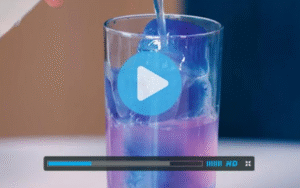Prostate health is one of the most important pillars of men’s overall well-being, yet it is often ignored until problems arise. For many men, prostate issues such as benign prostatic hyperplasia (BPH), prostatitis, or prostate cancer become a wake-up call later in life. But the truth is, prostate care should not start only when symptoms appear—it should begin early as part of a lifelong commitment to prevention, vitality, and lasting wellness.
This roadmap is designed to guide men through every stage of life, outlining how to protect the prostate, reduce risks, and maintain health for decades to come. By taking a proactive approach, men can not only minimize discomfort but also ensure long-term energy, confidence, and quality of life.
Understanding the Prostate and Its Role in Men’s Health
The prostate is a walnut-sized gland located below the bladder and in front of the rectum. Its main function is to produce seminal fluid, which nourishes and transports sperm. While small, the prostate plays a major role in urinary and sexual health.
As men age, the prostate is prone to enlargement, inflammation, or cancerous changes. These issues can lead to urinary frequency, disrupted sleep, pelvic pain, and emotional stress. That’s why understanding prostate care is crucial at every stage of life.
The Three Stages of Prostate Care
A roadmap to prostate health can be divided into three main stages: prevention, management, and lasting wellness.
1. Prevention: Building the Foundation Early
Prevention begins well before symptoms show up. By making smart choices in early adulthood and middle age, men can lower their risk of developing serious prostate problems later in life.
Key preventive steps:
- Adopt a prostate-friendly diet: Eat foods rich in antioxidants such as tomatoes, leafy greens, berries, nuts, and fish high in omega-3s.
- Stay physically active: Exercise improves hormone balance, reduces inflammation, and promotes circulation.
- Limit unhealthy habits: Cut back on smoking, excessive alcohol, and processed foods.
- Manage stress effectively: Chronic stress disrupts hormone levels and can contribute to inflammation.
- Schedule regular screenings: Even without symptoms, men over 40 should discuss prostate health with their doctor.
2. Management: Addressing Symptoms Early
If symptoms of prostate problems begin—such as frequent urination, weak urine flow, or pelvic discomfort—it’s important to manage them promptly rather than ignore them.
Management strategies:
- Consult a healthcare provider: Early diagnosis of BPH, prostatitis, or prostate cancer leads to better outcomes.
- Practice pelvic floor exercises (Kegels): Strengthening pelvic muscles helps reduce urinary symptoms.
- Use digital health tools: Apps that track urinary frequency and lifestyle habits can provide helpful insights.
- Consider natural therapies: Supplements like saw palmetto or beta-sitosterol may help, but always consult a doctor first.
- Adjust daily habits: Avoid caffeine in the evening, drink fluids earlier in the day, and maintain a healthy sleep routine.
3. Lasting Wellness: Living Fully With Prostate Health
For men who have experienced prostate issues or are in their senior years, the focus shifts from symptom relief to long-term wellness and quality of life.
Lasting wellness practices:
- Balance treatment and lifestyle: Follow medical guidance while supporting health with nutrition, exercise, and stress reduction.
- Prioritize mental and emotional health: Prostate issues can affect self-esteem and intimacy. Mindfulness, counseling, or support groups can help.
- Stay connected: Engaging in social activities, community groups, or family connections reduces isolation and improves well-being.
- Continue screenings: Regular checkups help monitor progress and prevent complications.
- Embrace holistic living: Wellness is not just about the absence of disease but about vitality, energy, and purpose.
How Prostate Health Links to Quality of Life
Prostate care goes far beyond avoiding medical issues. It has a direct connection to daily comfort, confidence, and longevity.
- Better sleep: By reducing urinary symptoms, men enjoy deeper rest and higher energy levels.
- More confidence: Managing prostate health reduces anxiety in public and professional settings.
- Improved intimacy: A healthy prostate contributes to sexual health and relationship satisfaction.
- Emotional resilience: Men who take charge of their health experience lower stress and higher mental clarity.
- Active aging: Prostate wellness supports mobility and vitality, allowing men to enjoy hobbies, travel, and family life well into their later years.
Real-Life Stories: Men Taking Control of Prostate Health
- James, 55: After early signs of BPH, James started a fitness routine, reduced caffeine, and worked with his doctor. Today, his symptoms are minimal, and his energy is back.
- Robert, 63: Diagnosed with early prostate cancer, Robert combined medical treatment with a plant-based diet and stress-reducing meditation. He reports better health than before his diagnosis.
- Michael, 70: Living with BPH, Michael uses digital apps to track symptoms and lifestyle. By staying proactive, he continues to cycle, travel, and enjoy retirement.
These stories highlight the power of a proactive roadmap that focuses not just on treatment but on prevention and long-term vitality.
The Future of Prostate Health: Prevention Meets Technology
The future of prostate care is promising. With the rise of digital health tools, precision medicine, and greater awareness, men now have more opportunities than ever to take control of their prostate wellness. Apps, telehealth services, and personalized treatment plans allow men to track their progress and make informed decisions in real time.
Final Thoughts
A man’s roadmap to prostate health begins with prevention, continues with effective management, and leads to lasting wellness. Prostate care is not simply about treating symptoms—it’s about ensuring long-term vitality, independence, and quality of life.
By making healthy lifestyle choices, seeking medical guidance, and embracing a holistic approach, men can protect their prostate and unlock a healthier, more fulfilling future.
Remember: prostate health is not a one-time concern—it’s a lifelong journey. And the earlier you start caring for it, the more rewarding your path to lasting wellness will be.
>>> Backyard weed fixes enlarged prostate & provides complete relief



